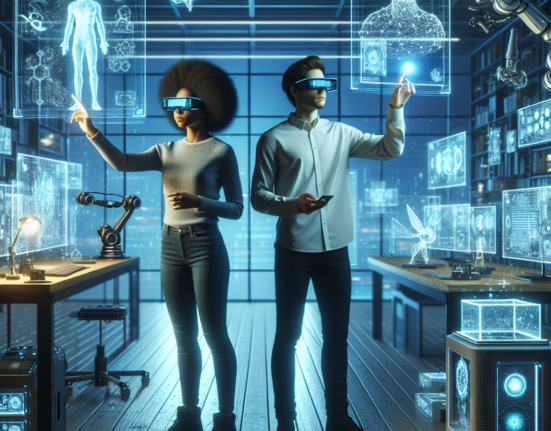In recent years, the integration of technology into education has not merely changed how students learn but has fundamentally transformed the educational landscape. This sweeping shift, driven by a burgeoning field known as Educational Technology or EdTech, is crafting a new age of learning where traditional classroom limitations are rapidly dissolving. From interactive software to AI-driven personalized learning experiences, technology is paving the way for a more inclusive, efficient, and engaging learning environment. Let’s explore the various facets of how EdTech is revolutionizing education.
Personalized Learning Experiences
One of the most significant advancements in EdTech is the advent of personalized learning. Traditional classrooms often employ a one-size-fits-all approach, catering to the average learning curve and generally neglecting the diverse educational needs of individual students. However, with adaptive learning technologies powered by artificial intelligence (AI) and machine learning, education can be tailored to each student’s unique pace, style, and interests.
Sophisticated algorithms analyze data from student interactions, assessments, and engagement levels to construct custom learning paths. Platforms such as DreamBox and Knewton offer personalized curriculum choices, enabling students to explore subjects in greater depth or receive additional support where needed. This individualized approach not only enhances academic performance but also fosters a more profound connection to the subject matter.
Enhanced Accessibility and Inclusivity
EdTech has also made notable strides in enhancing accessibility and inclusivity in education. For students with disabilities, technology offers tools that accommodate various learning needs. Screen readers, speech-to-text applications, and specialized learning apps cater specifically to students with visual, auditory, or motor impairments. For example, Microsoft’s immersive reader and Google’s accessibility features offer invaluable support for learners with dyslexia and other reading challenges.
Moreover, the global reach of online learning platforms has democratized access to quality education. Students from underprivileged backgrounds or remote areas can now partake in courses from top-tier institutions, breaking down socioeconomic and geographic barriers.
Engaging and Interactive Learning
The advent of interactive and immersive learning tools like virtual reality (VR) and augmented reality (AR) has taken student engagement to unprecedented levels. These technologies provide students with experiential learning opportunities that were previously unimaginable. For instance, biology students can virtually dissect a frog without any physical specimens, or history students can explore ancient civilizations through 3D reconstructions.
Gamification is another trend in EdTech that reimagines learning by incorporating game elements such as points, badges, and leaderboards into educational content. Platforms like Kahoot! and Quizizz make learning fun and competitive, motivating students to participate more actively.
Bridging Communication Gaps
Effective communication is critical for successful education, and EdTech solutions have significantly bridged communication gaps between students, teachers, and parents. Learning management systems (LMS) like Canvas and Blackboard enable seamless communication and collaboration. Video conferencing tools, notably Zoom and Microsoft Teams, have become indispensable, especially during the COVID-19 pandemic, allowing for real-time interaction and instruction irrespective of physical locations.
Parent-teacher communication has also been enhanced through various platforms that provide real-time updates on student progress, homework notifications, and important announcements, fostering a supportive learning ecosystem.
Lifelong Learning and Skill Development
The traditional model of education primarily focused on the first two decades of life, often leaving individuals to fend for themselves as they enter the workforce. EdTech is redefining this paradigm by promoting lifelong learning. Online learning platforms like Coursera, Udemy, and edX offer a plethora of courses across diverse disciplines, empowering individuals to continuously upskill and reskill. This trend is particularly pertinent in today’s rapidly changing job market, where the demand for new skills and competencies is constant.
Data-Driven Insights and Decision Making
Lastly, the use of data analytics in EdTech provides educators with invaluable insights into students’ learning behaviors, performance trends, and potential challenges. By harnessing big data, schools and universities can make more informed decisions, customize instructional strategies, and proactively address academic difficulties.
Conclusion
In conclusion, the EdTech revolution is transforming education in multifaceted ways. By fostering personalized learning, enhancing accessibility, making learning more engaging, bridging communication gaps, promoting lifelong learning, and leveraging data-driven insights, technology is setting the stage for a brighter and more equitable educational future. As we continue to innovate and refine these tools, the possibilities for the future of education are limitless—a future where every learner can thrive.
















Leave feedback about this
You must be logged in to post a comment.